by Claudia Selene Smith, Principal Dancer
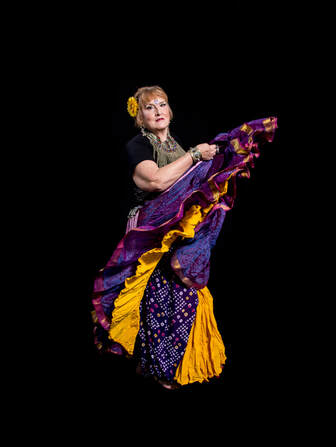
When I first attended my free DanceCraft class, it seemed the room was filled with self-assured women. They carried themselves with ease and were comfortable with themselves. There was a table with costume pieces and props set up on it. I felt very self-conscious and intimidated. There was an awkwardness inside me and I really wanted to turn around and exit the room. Yet someone had spotted me, said “hello” and fortunately for me there was no escape.
Little did I know that I was about to embark on a journey that would transform my life.
I was familiar with performing, I had recently left an A Capella barbershop chorus in the Nature Coast area, and I was hungry for more physical movement. Years before I had taken weekly jazz dance classes and learned that I enjoyed moving my body. I learned that dance was a healing balm for my body and soul.
When I look back at that free class (2012) I remember feeling so shut down. Jaynellen took us through the basic steps of an improvised dance. There were students there who were actively taking the classes and they knew the steps well and stood next to me helping me to see the movements and the form. The experienced students were friendly and helpful. They conveyed their happiness about performing and practicing the dance. I felt their welcoming warmth and I basked in the middle of the room surrounded by the more experienced dancers.
I had decided that I would attend the class once a week to take the place of my gym membership. The moves were difficult. Dancing with my stomach and moving my hips the way this dance required was not an exercise that I’d ever experienced. I compared myself to others in the class especially another woman who had come into the class around the same time I did. I have a competitive nature and it was hard for me to accept my shortcomings. I soon realized my learning process I was a tactile experience. I learned by feeling and experiencing the moves in my body rather than just by sight.
I learned that some of the other women had made a deeper commitment to the dance. I told myself, “Well I am just doing this for fun. I don’t want to get serious with it, an hour once a week and then go home.” This attitude seemed to affirm the difficulties that I had with the movements. After a year I decided to take a second class so I travelled across county once a week taking the Level one Dance Craft improv in both locations. By doing this more women were brought into my life and my muscle memory began to improve.
I did struggle whenever I got into a lead position. I wanted so bad to learn how to lead the group but I was challenged with my timing and rhythm of the music with the steps. My teachers, Jaynellen and Paula, suggested that I count the music with the steps. Since I wanted so badly to improve, I made a commitment to be the designated counter for the class. I counted the music for everyone and my dance improved dramatically. My confidence with leading the group grew in leaps and bounds. I finally felt like I was keeping up with my sister dancers. I began to feel as though I now had something of value to give to the new dancers who came into the free classes and the new students that made the decision to commit to weekly classes.
I began to maintain a quality of dance that finally enabled me to begin to learn the second level in DanceCraft. I went into this next level with a sister dancer, and together she and I struggled through learning another library of new steps. This brought more challenges to our bodies and our brains. It was near this time that I earned my 25-yard skirt, and learning to dance in such a large skirt was another challenge.
At about the time I began learning the Level 2 Repertoire, Jaynellen began the Fat Chance Belly Dance (ATS/FCBD) style classes.. This was a whole new genre of the dance for us that was similar to the DanceCraft style yet also very different. The cues for the dance were a lot more subtle and the style relied on the knowledge of another dancer’s body language. Near the launching of FCBD style I declined moving into the classes. I did not miss much of the class because the other dancer’s started to talk about it. I became curious (that competitive nature of mine took over) and begrudgingly I started to attend the FCBD classes. I learned that there was a different pattern of zilling accompanying this style which frustrated me. We also learned even more ways of moving our hips with intricate isolations, practicing the taxim and reverse taxim (movement of one hip in opposition to the other on a vertical plane). These movements baffled me; they were intricate to see, let alone perform.
I must acknowledge that many times, my anger propelled me into my next level of learning. The teachers of DanceCraft gave me space to adapt to any challenging process. I never took my anger out on another dancer. at one point though, I stomped around a rehearsal with a frown on my face and at another rehearsal I took over a lead pull out and didn’t stop for the rest of the song to share the lead. My ego gets mixed up in my learning process. My head thinks I am better at a skill than I am in reality. I get cocky and my vision closes down. Then, by remaining willing, another reality cracks the mirror and I see more actions that are yet be learned. I suddenly see the next level of skill. Then I the student am ready and I the teacher appear.
The dance has kept me out-going. If it wasn’t for DanceCraft I would probably not attend as many community functions. It may surprise some of my dance sisters but I can be a bit of an introvert. I seldom open my home to my friends and I like to stay home on the weekends. DanceCraft has hosted the courthouse stage in the “former” Florida Blueberry Festival and has invited other belly dance troupes and acts to perform there. We also participated in Christmas festivals, Swamp Fests, First Responders Day, Weeki-Stock and various music concerts and festivals. All these events were hard work; to set up the tent and pull down the tent, yet, when I look back on these events there are fond memories of inspiration, dancing and bonding with the women of DanceCraft and allowing me to learn to continue to become more extroverted.
When I think about those first women who welcomed me to my first free class, all the dancers since, and the current women who are now in our group, these memories and experiences will never leave me. I remember their energy, their laughter, their physical stature, their achievements.
At this time well into my ninth year with DanceCraft many times it feels like I am living a dream. I hard to believe that I am actually the images that I seen photos and video clips. My history of abuse comes back to haunt me in certain ways in my dance life. I have problems with accepting praise and attention sometimes. I have troubles showing my heart and believing it is as pure and unspoiled as is being reflected back to me by my experiences and my sister dancers. And I often wonder if I am deserving of all of the love that is given to me by these dance sisters. It is a dichotomy of my many selves.
The dance is more than the shows, exercise, and practice; it is a way of life. It is indeed a sisterhood that transcends the boundaries that we set for ourselves. It pushes the definition of feminine beauty, ideology, fellowship, strength, sportsmanship and our cultural roles. I used to grieve that I found this dance at the age of grandmother hood, this dance that I told myself was made for a younger woman. This art that takes years to perfect. DanceCraft has helped me to redefine my age, resilience, condition, and acceptance. My dance teachers, all of them, have given me the gift of passion that transcends all time.
Little did I know that I was about to embark on a journey that would transform my life.
I was familiar with performing, I had recently left an A Capella barbershop chorus in the Nature Coast area, and I was hungry for more physical movement. Years before I had taken weekly jazz dance classes and learned that I enjoyed moving my body. I learned that dance was a healing balm for my body and soul.
When I look back at that free class (2012) I remember feeling so shut down. Jaynellen took us through the basic steps of an improvised dance. There were students there who were actively taking the classes and they knew the steps well and stood next to me helping me to see the movements and the form. The experienced students were friendly and helpful. They conveyed their happiness about performing and practicing the dance. I felt their welcoming warmth and I basked in the middle of the room surrounded by the more experienced dancers.
I had decided that I would attend the class once a week to take the place of my gym membership. The moves were difficult. Dancing with my stomach and moving my hips the way this dance required was not an exercise that I’d ever experienced. I compared myself to others in the class especially another woman who had come into the class around the same time I did. I have a competitive nature and it was hard for me to accept my shortcomings. I soon realized my learning process I was a tactile experience. I learned by feeling and experiencing the moves in my body rather than just by sight.
I learned that some of the other women had made a deeper commitment to the dance. I told myself, “Well I am just doing this for fun. I don’t want to get serious with it, an hour once a week and then go home.” This attitude seemed to affirm the difficulties that I had with the movements. After a year I decided to take a second class so I travelled across county once a week taking the Level one Dance Craft improv in both locations. By doing this more women were brought into my life and my muscle memory began to improve.
I did struggle whenever I got into a lead position. I wanted so bad to learn how to lead the group but I was challenged with my timing and rhythm of the music with the steps. My teachers, Jaynellen and Paula, suggested that I count the music with the steps. Since I wanted so badly to improve, I made a commitment to be the designated counter for the class. I counted the music for everyone and my dance improved dramatically. My confidence with leading the group grew in leaps and bounds. I finally felt like I was keeping up with my sister dancers. I began to feel as though I now had something of value to give to the new dancers who came into the free classes and the new students that made the decision to commit to weekly classes.
I began to maintain a quality of dance that finally enabled me to begin to learn the second level in DanceCraft. I went into this next level with a sister dancer, and together she and I struggled through learning another library of new steps. This brought more challenges to our bodies and our brains. It was near this time that I earned my 25-yard skirt, and learning to dance in such a large skirt was another challenge.
At about the time I began learning the Level 2 Repertoire, Jaynellen began the Fat Chance Belly Dance (ATS/FCBD) style classes.. This was a whole new genre of the dance for us that was similar to the DanceCraft style yet also very different. The cues for the dance were a lot more subtle and the style relied on the knowledge of another dancer’s body language. Near the launching of FCBD style I declined moving into the classes. I did not miss much of the class because the other dancer’s started to talk about it. I became curious (that competitive nature of mine took over) and begrudgingly I started to attend the FCBD classes. I learned that there was a different pattern of zilling accompanying this style which frustrated me. We also learned even more ways of moving our hips with intricate isolations, practicing the taxim and reverse taxim (movement of one hip in opposition to the other on a vertical plane). These movements baffled me; they were intricate to see, let alone perform.
I must acknowledge that many times, my anger propelled me into my next level of learning. The teachers of DanceCraft gave me space to adapt to any challenging process. I never took my anger out on another dancer. at one point though, I stomped around a rehearsal with a frown on my face and at another rehearsal I took over a lead pull out and didn’t stop for the rest of the song to share the lead. My ego gets mixed up in my learning process. My head thinks I am better at a skill than I am in reality. I get cocky and my vision closes down. Then, by remaining willing, another reality cracks the mirror and I see more actions that are yet be learned. I suddenly see the next level of skill. Then I the student am ready and I the teacher appear.
The dance has kept me out-going. If it wasn’t for DanceCraft I would probably not attend as many community functions. It may surprise some of my dance sisters but I can be a bit of an introvert. I seldom open my home to my friends and I like to stay home on the weekends. DanceCraft has hosted the courthouse stage in the “former” Florida Blueberry Festival and has invited other belly dance troupes and acts to perform there. We also participated in Christmas festivals, Swamp Fests, First Responders Day, Weeki-Stock and various music concerts and festivals. All these events were hard work; to set up the tent and pull down the tent, yet, when I look back on these events there are fond memories of inspiration, dancing and bonding with the women of DanceCraft and allowing me to learn to continue to become more extroverted.
When I think about those first women who welcomed me to my first free class, all the dancers since, and the current women who are now in our group, these memories and experiences will never leave me. I remember their energy, their laughter, their physical stature, their achievements.
At this time well into my ninth year with DanceCraft many times it feels like I am living a dream. I hard to believe that I am actually the images that I seen photos and video clips. My history of abuse comes back to haunt me in certain ways in my dance life. I have problems with accepting praise and attention sometimes. I have troubles showing my heart and believing it is as pure and unspoiled as is being reflected back to me by my experiences and my sister dancers. And I often wonder if I am deserving of all of the love that is given to me by these dance sisters. It is a dichotomy of my many selves.
The dance is more than the shows, exercise, and practice; it is a way of life. It is indeed a sisterhood that transcends the boundaries that we set for ourselves. It pushes the definition of feminine beauty, ideology, fellowship, strength, sportsmanship and our cultural roles. I used to grieve that I found this dance at the age of grandmother hood, this dance that I told myself was made for a younger woman. This art that takes years to perfect. DanceCraft has helped me to redefine my age, resilience, condition, and acceptance. My dance teachers, all of them, have given me the gift of passion that transcends all time.
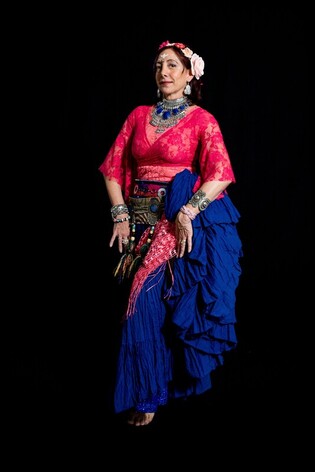

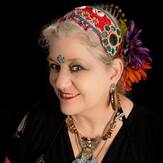
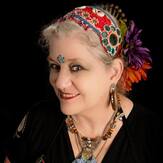
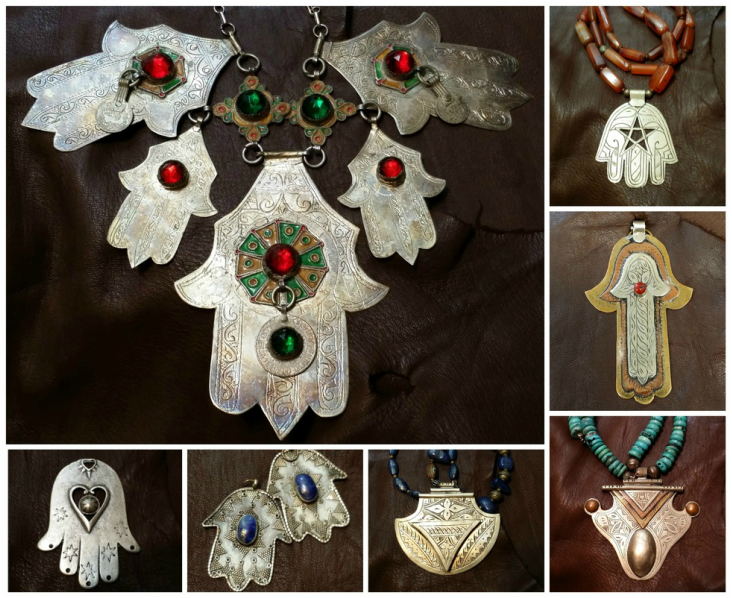
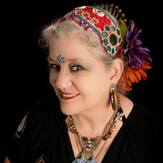
 RSS Feed
RSS Feed